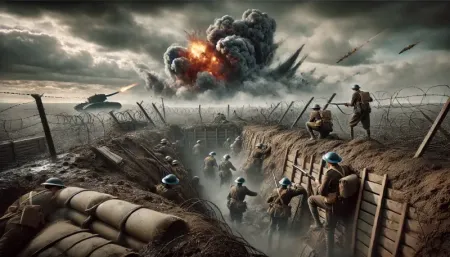World War I (The Great War)
When it happened
- Start: July 28, 1914.
- End: November 11, 1918.
- Duration: Approximately 4 years and 4 months.
Main causes
- The assassination of Archduke Franz Ferdinand of Austria in Sarajevo (June 28, 1914), which triggered pre-existing tensions.
- Territorial, economic, and colonial rivalries among major European powers.
- A complex system of military alliances, which pulled many countries into the conflict.
Countries involved
The nations were divided into two major alliances:
-
The Allies (Triple Entente):
- France, United Kingdom, Russia (until 1917).
- Italy (joined in 1915), Japan, United States (joined in 1917).
- Other nations: Serbia, Belgium, Greece, Portugal, Romania, among others.
-
The Central Powers:
- Germany, Austro-Hungarian Empire, Ottoman Empire (modern-day Turkey), and Bulgaria.
Where it was fought
While it was a global conflict, the primary battlefronts were:
- Western Front: In France and Belgium (trenches between Germany and the Allies).
- Eastern Front: In Eastern Europe (Russia against Germany and Austria-Hungary).
- Italian Front: Between Italy and Austria-Hungary.
- Balkan Front: In Southeast Europe.
- Battles also took place in Africa, the Middle East, and the Atlantic Ocean.
Estimated deaths
The war caused:
- Over 20 million deaths, including both military and civilian casualties.
- An additional 21 million wounded and millions of displaced people.
Consequences
- The collapse of the German, Austro-Hungarian, Ottoman, and Russian Empires.
- Redrawing of Europe and the Middle East’s borders.
- The establishment of the League of Nations (a precursor to the UN).
- The harsh terms imposed on Germany by the Treaty of Versailles (1919), which set the stage for future conflicts, particularly World War II.
Legacy
World War I is remembered not only for its military impact but also for introducing technological warfare (tanks, airplanes, chemical weapons) and the horrific human conditions in battlefields, especially in the trenches.








